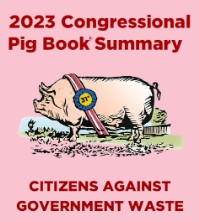
Eliminate Community Development Block Grants (CDBGs)
1-Year Savings: $3.3 billion
5-Year Savings: $16.5 billion
In the 1970s, many American cities suffered from destitution and blight. In 1974, Congress created the CDBG program in an effort to revitalize low income areas in cities across the country. Three years later during the 1977 World Series, swathes of New York’s South Bronx burned to the ground as Howard Cosell narrated on national television.The CDBG program was intended for infrastructure investment, housing rehabilitation, job creation, and public services in metropolitan cities and urban counties. Use of the grants was intended to be flexible, but the more than $100 billion given away to local governments over the last 35 years has fallen short on both accountability and results. Buffalo, New York, has received more than $500 million in CDBGs over the last 30 years, with little to show for it. Los Angeles handed out $24 million to a dairy that went bust 18 months later.
The CDBG formula for eligibility does not take a community’s average income into account. As a result, several very wealthy cities with robust tax bases, like Greenwich, Connecticut, have received CDBG dollars. A September 2012 GAO report found that “some cities with higher unemployment rates received less funding per unemployed person than other cities with lower unemployment rates.”
Former President Obama routinely recommended reducing CDBG funding because “the demonstration of outcomes [is] difficult to measure and evaluate.” Former President Trump’s budgets between FYs 2018 and 2021 recommended eliminating the entire CDBG program. Despite its lengthy record of failing to achieve its objectives and wasting the taxpayer’s money, the Coronavirus Aid, Relief, and Economic Security (CARES) Act, signed into law by then-President Trump on March 27, 2020, provided $2 billion for the CDBG program, which represents 60.6 percent of the $3.3 billion appropriated in FY 2023.
Reduce the U.S. Annual Contribution to the United Nations (UN) by 25 Percent
1-Year Savings: $3.1 billion
5-Year Savings: $15.6 billion
The U.S. is the largest contributor to the UN. In FY 2021, the U.S. provided $12.5 billion, or 25.8 percent of the UN’s budget. The FY 2021 contribution represented a 96.9 percent increase over the FY 2009 contribution of $6.35 billion and a 290.6 percent increase over the $3.2 billion contributed in FY 2001. Since 2001, the UN’s regular budget has more than doubled and its peacekeeping budget has more than tripled, a rate of growth that is much faster than the economies of its member nations.
The Trump administration proposed a 50 percent budget cut for the U.S.contribution to the UN in its FY 2017 budget, which was reduced to a 5 percent reduction, or $285 million, in the UN’s 2018-2019 budget following negotiations with the State Department. As the U.S. attempts to grapple with mounting deficits and debt, organizations like the UN should not be spared the knife when it come to trimming the budget fat. Because UN spending has increased so dramatically and the organization continues to be bloated and inefficient, it makes sense to cut U.S. spending by 25 percent. After all, former UN Secretary General Boutros Boutros-Ghali once estimated that “perhaps half of the UN work force does nothing useful.”

















